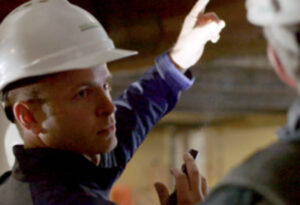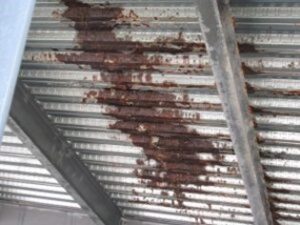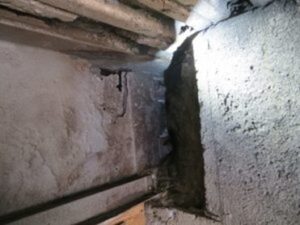Parking decks experience a lot of wear and traffic over the course of a year. Depending on location, weather also plays a large role in the aging of a parking deck. It’s crucial that the various components of a parking garage, such as the structure, deck, coatings, ramps, stairways, and foundations be inspected yearly to ensure small problems do not lead to full-scale restoration projects.
 Sometimes, performing regular roofing and waterproofing inspections and adhering to a maintenance plan fall by the wayside, especially if funds are being allocated to other projects. However, if inspections and maintenance are not conducted, and deleterious conditions are not addressed, severe deterioration that could lead to structural failure might result.
Sometimes, performing regular roofing and waterproofing inspections and adhering to a maintenance plan fall by the wayside, especially if funds are being allocated to other projects. However, if inspections and maintenance are not conducted, and deleterious conditions are not addressed, severe deterioration that could lead to structural failure might result.
Over time, water infiltration within a parking deck will cause serious issues. Typically, steel, as part of a structure or reinforcement within the concrete of a parking deck, is not meant to come in direct contact with water. When this occurs, rust and deterioration of the steel manifest in staining and spalled concrete. Staining is usually the first indicator of water infiltration. If staining is observed, a professional should be contacted as soon as possible to determine the source(s) and implement a repair plan. The presence of spalling usually indicates that a water infiltration issue has been present for some time and that the steel deterioration is more severe. Again, a professional should be retained as soon as possible. Probes, concrete cores, or radar surveys may be required to identify all issues and determine the level of deterioration. If no action is taken to remediate the problem, or to diagnose the source(s) of water infiltration, the deterioration will obviously worsen.
 Joints are found between parking deck components, such as the intersections between concrete slabs, bulkhead structures, and parapets or guard walls. Since the two components will move differently, sealant is typically installed at these joints to accommodate this movement. Joints are often common failure points because of this movement and should be inspected at least once a year.
Joints are found between parking deck components, such as the intersections between concrete slabs, bulkhead structures, and parapets or guard walls. Since the two components will move differently, sealant is typically installed at these joints to accommodate this movement. Joints are often common failure points because of this movement and should be inspected at least once a year.
Recently, traffic coatings have become more popular. They effectively protect parking deck surfaces, are aesthetically appealing, and are more cost effective than a waterproofing system with an overburden/traffic slab. A typical warranty for most traffic coatings is 5 years. The coating system should still be inspected annually to ensure its integrity, as well as to identify any premature failure of sealant joints, expansion joints or penetrations through the deck. Even the coating systems of parking decks with light traffic can be damaged by improper snow removal and/or aggressive driving. By performing regularly scheduled and thorough inspections, coating system failures can be identified and resolved before they lead to more serious steel or concrete deterioration in other areas of the deck.
 Whether a parking deck has one or multiple levels, if it’s compromised, it can become a danger to all who access it. Collapse of a section or the entire structure as a result of deterioration is the worst-case scenario. Regular inspection and maintenance would prevent the need for a full-scale restoration project, reduce repair costs, avoid inconvenient or untimely garage closures, and certainly avert catastrophic failure due to deterioration.
Whether a parking deck has one or multiple levels, if it’s compromised, it can become a danger to all who access it. Collapse of a section or the entire structure as a result of deterioration is the worst-case scenario. Regular inspection and maintenance would prevent the need for a full-scale restoration project, reduce repair costs, avoid inconvenient or untimely garage closures, and certainly avert catastrophic failure due to deterioration.
For those that are local to the New York area, we suggest our overview of the NYC Parking Garage Ordinance: Local Law 126 and the New York State Parking Garage Inspection Program: Title 19 here.